
OCZ DDR2 PC2-8500 Reaper HPC Edition
Manufacturer: OCZUK Price (as reviewed): £110.23 (inc. VAT)
US Price (as reviewed): $170.30 (ex. Tax)
The Reaper modules feature the new "heat piped conduit" (HPC) design that duct the heat away from the side heatspreaders up into the case airflow stream. But removing the heat from the main body of the modules and providing more surface area, theoretically this provides more capability to overclock by keeping the memory chips cooler and OCZ claims a doubling of heat dissipation in real systems. The PC2-8500, 1066MHz modules we tested here were EPP enabled and have an EVP up to a pretty lofty 2.35V.
Kit: 2 x 240-pin DDR2 Double Sided DIMM
Module Size: 2GB Dual Channel Kit (2 x 1GB)
Module Code: OCZ2RPR10662GK
Rated Speed: 1066MHz DDR2
Rated Timings: 5-5-5-15
Rated Voltage: 2.3V and up to 2.35V Extended Voltage Protection
Memory Chips: Micron D9GMH (B6-3)
EPP: Yes
The modules come with black heatspreader bodies that are chunkier than the usual heatspreaders. It also sports a ribbed edge for greater
This means that instead of a simple, straight and even heat conduction up and out like Corsair's DHX modules, the heat has to transfer from one aluminium plate to another, then into the heatpipe and then into the fin array: it's far from ideal. We understand that there is an extremely small space between memory modules, but if OCZ really wanted to conduct heat away from the memory chips it would flatten and spread the heatpipes then epoxy them directly.
It's technically more difficult but should apply a better result: somewhere in between this and what Team Group offers. OCZ also fails to cool the PCB like Corsair does with its DHX as well: heat does go in all directions. Finally, the overall look is somewhat inconsistent: black heat spreader and fin array, copper heatpipe and green PCB? There is very little PCB to actually see but the build quality of the fin array doesn't feel up to OCZ's typically high standards either.
The design is good for a few things though: if you are unlucky enough to have a dead stick, the heatpipe array becomes a good handle to use a module as an ice scraper for your car, or flip it around and perhaps it's a brush for your cat?
OCZ gave us some 1066MHz modules, which should become the standard for AM2+ when it is finally released. They are only rated at 5-5-5-15 at 2.3V even though they use the more popular Micron D9 memory chips. We were unfortunately disappointed in not being able to run these at 800MHz CAS-3, even up to the EVP warranted 2.35V our best effort was capped at just 4-4-4-12-22-5tWR-2T. On the overclocking front, we achieved a slightly better result but it was by no means outstanding: 1178MHz or PC2-9424 at 5-5-5-15-33-6tWR-2T.

MSI MPG Velox 100R Chassis Review
October 14 2021 | 15:04

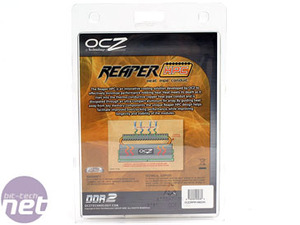
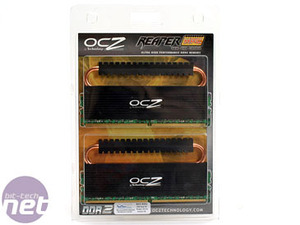
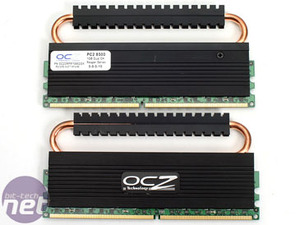
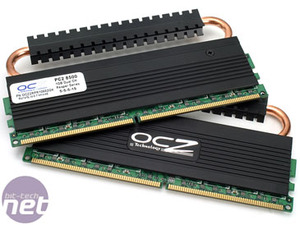
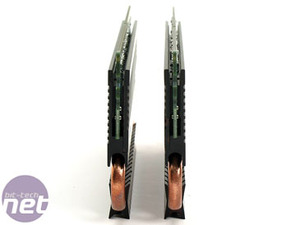
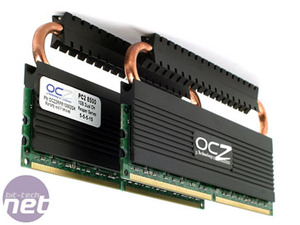







Want to comment? Please log in.